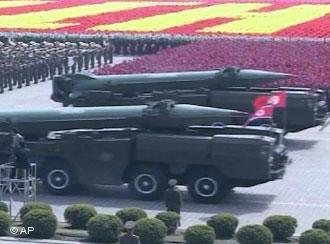Following the Partial Test Ban Treaty and the Outer Space Treaty, the United States, the United Kingdom and the Soviet Union continued negotiating on nuclear issues. The Treaty on the Non-Proliferation of Nuclear Weapons (NPT) was drafted and opened for signing in 1968. It went into effect in 1970, recognizing US, the UK, France, China and the Soviet Union as the only officially recognized states openly possessing nuclear weapons. (The Russian Union inherited the NPT recognition when the Soviet Union dissolved in 1991. China and France signed the Treaty in 1992.) These five nuclear states are also the permanent members of the United Nations Security Council.
The purpose of the treaty was to work against the spread of nuclear weapons beyond the nations which currently possessed them, encourage the world-wide peaceful use of nuclear power and to move towards disarmament of all nations of nuclear and conventional weapons. The core of the agreement is to have “the NPT non-nuclear-weapon states agree never to acquire nuclear weapons and the NPT nuclear-weapon states in exchange agree to share the benefits of peaceful nuclear technology and to pursue nuclear disarmament aimed at the ultimate elimination of their nuclear arsenals.”
Many believe that the most important aspect of the NPT and the one which should be emphasized over other provisions of the NPT is the Non-Proliferation issue. The enormous power of nuclear weapons and the fact that the damage and fallout from even a limited nuclear exchange could easily spread beyond the borders of the combatants makes the spread of nuclear weapons a very important global issue. Under the Treaty, The states with nuclear weapons agree not to give nuclear weapons to states which don’t have them or to encourage or assists such states in acquiring them. The states which don’t have nuclear weapons agree not to make them or try to acquire them or assistance to make them. There is also provision in the Treaty for the International Atomic Energy Agency to put into place safe guards and to monitor states without nuclear weapons to insure that such states are not diverting resources from peaceful nuclear facilities towards weapons production.
The section that deals with disarmament in the Treaty encourages the signatory nuclear weapons states to work in good faith toward ending the nuclear arms race and eliminating the arsenals of nuclear weapons as well as conventional weapons. There has been a debate over the meaning of the section between the countries that have nuclear weapons and those that do not. The nuclear weapons nations claim that they are only obligated to work toward some disarmament agreement some day and that they have been carrying out reduction of warheads and missiles. The countries without nuclear weapons claim that the section requires that the nuclear weapon countries need negotiate a comprehensive disarmament treaty as soon as possible and that they are failing to move forward on such a treaty. Arguments continue over the linkage of non-proliferation to disarmament and the possible unexpected side-effects of the disarmament which has occurred.
The non-nuclear states are entitled to assistance in developing peaceful nuclear power under the Treaty. One of the big concerns with this issue is the fact that enriched uranium is required for fueling many reactors. The fuel must either be purchased on the international market or enriched inside the country with the reactor. Some non-nuclear weapon nations have enrichment capabilities that could be turned to production of fissile material for nuclear weapons. Iraq was sanctioned by the U.N. for violation of NPT obligations. North Korea never fully complied with its NPT requirements and eventually left the Treaty to pursue a nuclear weapons program. Iran is currently being criticized and heavily sanctioned for non-compliance to NPT inspection requirements.
Despite many problems and criticisms over the years, the NPT is generally regarded as the most important and successful international treaty on nuclear weapons. Only four countries are not signatories to the agreement. North Korea withdrew and has developed its own nuclear weapons. India and Pakistan have never signed the Treaty and both have nuclear arsenals and missile delivery systems. Israel has not signed the Treaty. It has not acknowledged that it possesses nuclear weapons but it is assumed to have a nuclear arsenal and delivery systems.
United States signs the The Treaty on the Non-Proliferation of Nuclear Weapons from americancorner.org.tw:

